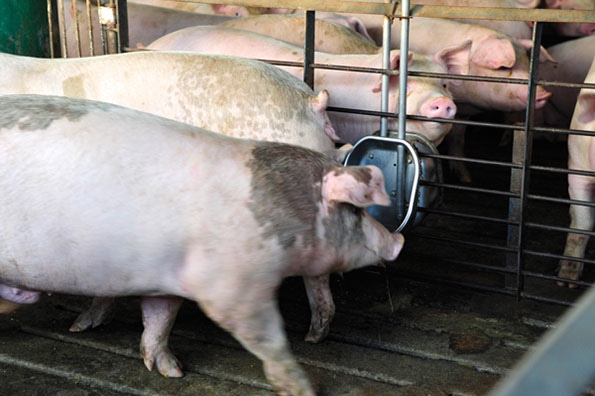Cash hog prices traded lower for six consecutive weeks which is extremely contra-seasonal during the summer months. In most years hog receipts and slaughter decline in the summer months allowing cash, product and futures to move higher.
August 22, 2016

Weekly hog slaughter for the week ending Aug. 20 approached 2.3 million. This kill represents the largest weekly hog slaughter since January. Indeed, pork production is forecast to be record large going into the fourth quarter. The surprising part of production this year has been the fact that summer production has been larger than expected. The final data will likely reveal that July production was record large.
This summer the pork carcass, or cutout values, have plunged sharply mostly due to an unexpected top in the fresh belly market. Fresh bellies have tumbled over 36% from their early summer highs. Hams have weakened and stabilized whereas the pork loin market has weakened substantially with loin values trading at record lows for this time of year. It is not that demand for U.S. pork is sluggish, it has simply been overwhelmed by consistently large summer production.
The weakness in the product has also weighed heavily on the cash hog market. Cash hog prices traded lower for six consecutive weeks which is extremely contra-seasonal during the summer months. In most years hog receipts and slaughter decline in the summer months allowing cash, product and futures to move higher. For most producers the spring and summer represents the timeframe in which most of the annual profits are achieved. That’s not been the case this year.
The good news for the pork producer is the expectation that feed prices will weaken dramatically, helping to lower the cost of production. Given the outlook for a 15 billion bushel corn crop, not only are corn futures prices expected to weaken, but the basis is expected to weaken dramatically during harvest. Cash corn prices in the Corn Belt are expected to trade below $3 per bushel.
The bad news from the outlook for dramatically cheaper feed prices is the temptation and tendency for producers to feed animals to heavier weights. This will be a negative factor for hog prices as well as cattle prices.
Record large pork and poultry production in tandem with rapidly rising beef production is expected to drive hog prices lower into the fall. A major fear and concern is the possibility that packer slaughter capacity may be challenged at some point during the fall. If this occurs, then a short-term spike downward in cash and futures is a distinct possibility.
We watch the activity and volume in the lean hog options market to get a read on the relative bullishness or bearishness of the trade. During several sessions we’ve noticed that volume of trade in lean hog puts has been twice, and sometimes nearly three times, that of calls. This, in our opinion, demonstrates a negative bias or concern among many hog traders (including pork packers, hog producers are large, well-informed speculators) that excessive supplies this fall could force cash prices, cutout values and future prices sharply lower. In addition to observing increased volume of trade in hog puts, we’ve noticed a build in volume and open interest in the December hog $46 puts. This strike price is $10 to $11 out-of-the money. Indeed, whoever is buying and accumulating these puts believes there’s a possibility of a major meltdown in hog prices during the fourth quarter.
Finally, another barometer to measure strength and/or weakness is observing pork packer processing margins. Margins tend to be tight and many times unprofitable during the summer months while improving and in most years very profitable during the fall and winter. This summer profitable pork packer processing margins consistently occurred as butcher hog supplies never grew tight. If we’re correct about record large numbers and record high production this fall, indeed one would expect packer margins to remain profitable and indeed improve moving forward. If margins would suddenly and unexpectedly begin to narrow, it would be a solid clue that our analysis is incorrect.
About the Author(s)
You May Also Like





